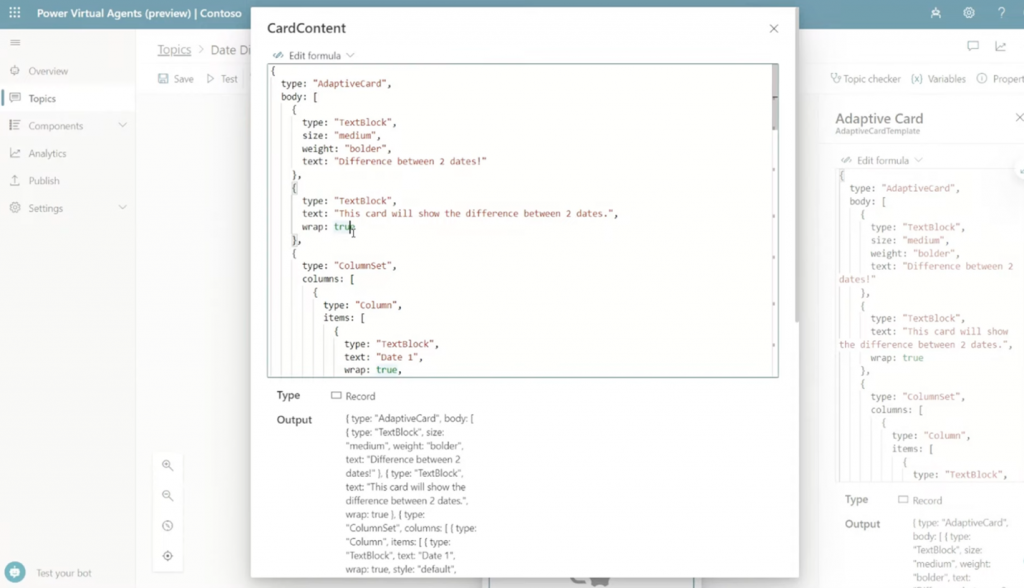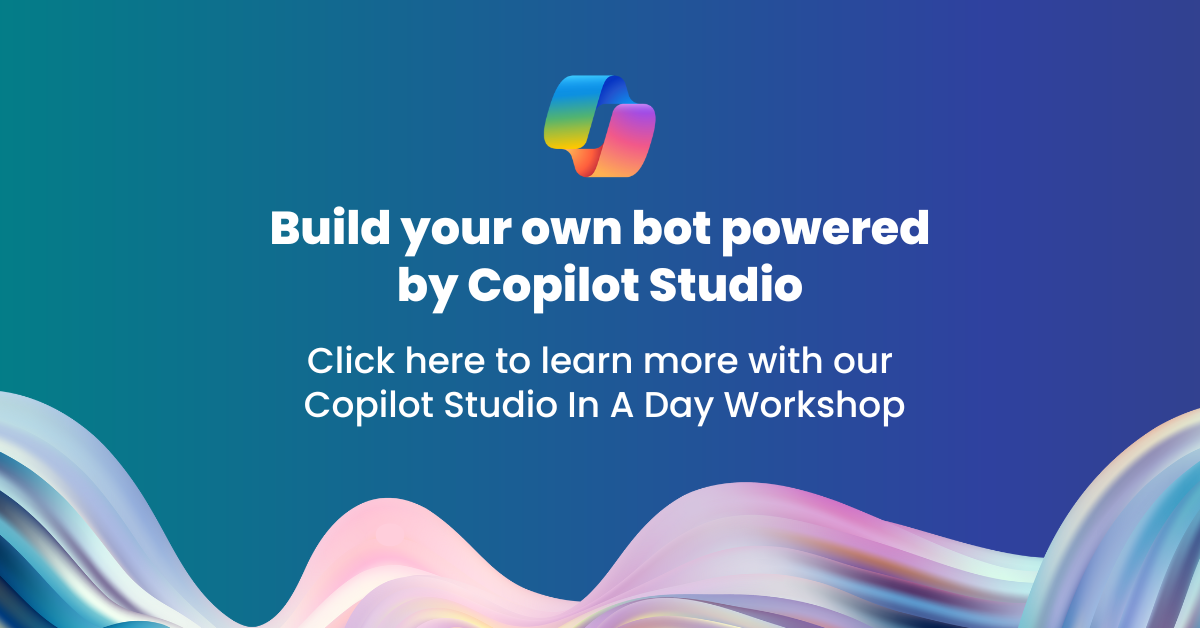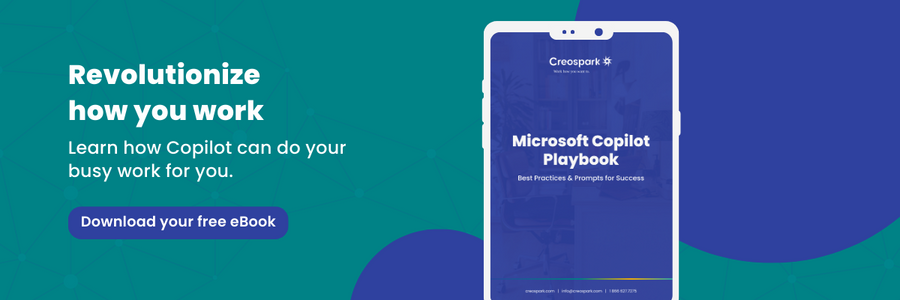A Beginner’s Guide to Microsoft Power Virtual Agents (PVA)
Chatbots. You’ve probably seen one before, perhaps on a website or in your organization. They’ve come a long way, becoming smarter every day thanks to artificial intelligence. Companies like Microsoft are enabling anyone— coders and non-coders alike— to easily create bots. This influx of bots will only lead to further technological advancements in the market. So far, they’ve been received quite well, with 62% of consumers preferring to use a customer service bot rather than speaking with a human agent. This brings the question: what is Microsoft Power Virtual Agents, and how can you tap into their power for your organization?
* Power Virtual Agents is now offered by Copilot Studio *
What is Microsoft Power Virtual Agents (PVA)?
As part of the Power Platform, Microsoft PVA is an app/service enabling users to create chatbots for any task. From simple answers to complex conversations, PVA lets users build a bot capable of engaging and assisting their end-users at levels on par with humans. Its integration with the Power Platform lets users deploy the bot across multiple channels, like websites, MS Teams, and SharePoint. And because PVA is a low-code solution, anyone can use the software without a coding background. Its drag, drop, and click functionality takes the complication out of the process, letting you focus on the main task at hand without excess distractions.
The value of a Virtual Agent:
Using a bot on your website or intranet is the equivalent of having a human greet you when you enter a building. The only difference is the bot doesn’t need sleep and it doesn’t make mistakes. Because they’re computers, they can work around the clock, so when that customer browsing your site at 3 am runs into an issue, your bot’s got their back. They’re also free of error, while us humans can’t tout a 100% accuracy on most tasks. You could have the bot perform the same task 1000 times, and they’d complete it with 100% accuracy, providing your organization with an exceptional customer service that is unmatched in your industry
They’re valuable because of their ability to act on behalf of the end-user. With PVA, you can easily bring chatbots to life to help you manage everyday tasks. Here are a few examples:
- Website: Use a bot to answer FAQs or assist with visitor requests and issues
- HR and IT: allow users to complete simple transactions and easily access information
- Taking this a step further, users can carry out advanced searches using a guided conversation
- Learning and development: connect people with learning opportunities, such as modules or courses
- Onboarding: new hires can interact with the bot like it’s a digital assistant, helping them through the onboard process
Using a bot to carry out these sorts of tasks will save your organization time, which they can spend on other more productive tasks, such as innovation and growth.
How PVA works?
The authoring canvas is Microsoft Power Virtual Agents’ heart and soul. It’s where users begin building their bots. The intuitive design makes it easy for anyone from citizen developers to pro-coders to go from idea to solution. The building process is usually as follows:
- Users define a list of topics they want the bot to answer questions about, such as product details or office hours. Topics are discrete conversation paths that allow users to have seamless conversations with a bot
- From there, users input a list of defined triggers for the topic, such as “what time is the store open on Sunday?” Because PVA matches triggers phrases to answers based on a percentage score, matching doesn’t need to be exact. However, if some answers may have varying trigger phrases, you can add multiple trigger phrases for the topic.
- After that, users can define each step of the bot, such as display message, or answer a question. You can also use branching to give users different options based on the end-user‘s response. For example, the bot can ask “what store are you looking for?” and offer a few choices.
PVA goes beyond these basic features, offering plenty of capabilities to take things further:
- Add sophisticated functionality to each step, such as Calls to Action, data retrieval from SharePoint lists, and workflow triggers that leverage Power Automate
- Incorporate videos, images, adaptive cards, and quick replies to your conversations
- Leverage the Power Platforms’ hundreds of connectors to integrate their bot with plenty of services
If you’re not a fan of texting, PVA also has a telephony channel. This allows you to configure your bot to make and receive phone calls. And don’t worry, this isn’t like the typical voice bot you’ve run into before with the boring, monotone voice. PVA lets users configure the bot’s voice font and speaking style, allowing for engaging conversations with end-users.
Another great feature provided by PVA is the ability to view your bots’ analytics. Get insight into how your end-users are interacting with a topic, such as query completion, abandonment, and volume of use. From there, creators can alter their bots to improve the end user’s interaction.
Beyond low-code capabilities
Using the unified authoring canvas, low code, and pro-code capabilities can be accessed in one spot, allowing pro and citizen developers to collaborate in one bot-building studio. Since PVA is built on top of Azure Bot Framework, developers can build upon the platform’s low code aspects. They can write adaptive dialogue code, manipulate data, use eventing, and embed conversational cards.

A quick recap
In short, PVA allows you to create bots that can interact with people, all without coding. Their ability to engage in complex conversations makes them great for helping answer user inquiries and solve issues. This enables anyone from sales to IT to use them, freeing up plenty of time to focus on other initiatives. Further, pro developers can take advantage of the unified authoring canvas to break past the low code capabilities and develop complex bots.
Bots are no longer a thing of the future, and Microsoft has made this quite apparent by enabling anyone to create them. If you want to enhance how your organization conducts its business, Microsoft Power Virtual Agents may just be the answer you’re looking for.
Related Posts
Subscribe our newsletter
Enter your email to get latest updates.



















